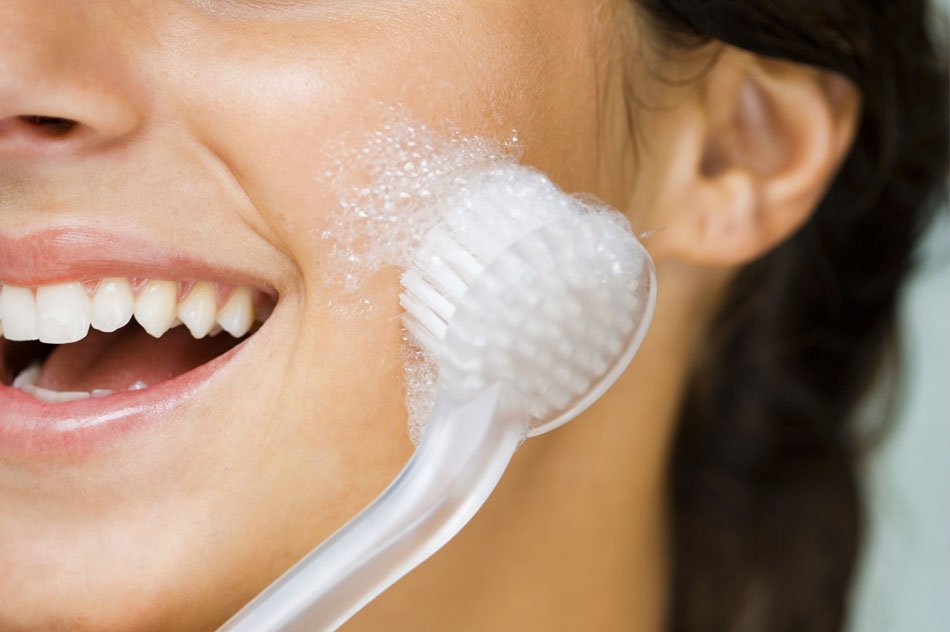
Exfoliation is an important part of one’s skincare routine. If you are into skincare and have your own routine, you have probably laid a phase for exfoliation in your skincare routine. Whether you are a skincare junkie or not, having an exfoliation step in your daily skincare routine is much recommended by dermatologists according to our research. Why? Let me bring you up to date with the latest information on how to exfoliate properly and what kind of ingredients are right for each skin type.

What is exfoliation?
Exfoliation is a practice of removing one’s dead skin cells of the outmost layer of the skin. It helps stimulate the skin regeneration process. In the process of it, the dead skin sloughs off which leads to a new skin layer to grow from underneath. Depending on the age, one’s skin turnover cycle can vary. However, in general most people have a turnover cycle of 20 days up to 60 days. The younger, the shorter the interval will be.
Our resources show exfoliating more than three times a week can do harm rather than good. In extreme cases, over-exfoliation can cause other skin problems to dawn upon your skin such as rosacea, over-sensitivity, rashes, and acne breakouts. As you over-exfoliate your skin, the skin barrier gets compromised, left vulnerable to external stimuli like bacteria.
In a nutshell: Exfoliate once up to three times a week, don’t go over than that.
The right ingredients
First thing first, we do not recommend using physical exfoliators too often. With respect, physical exfoliators bring benefits and they can be used as a major remedy to some skin problems. Nevertheless, in order to be effective, they need to be directly applied to skin and these physical exfoliants can turn into your worse nightmares. As physical exfoliators contain harsh and rough exfoliants, they do not go gentle on the skin.
Chemical exfoliators, on the contrary, they may not show you the quick results. However, they go gentler on the skin therefore less chances of skin problems to occur in using. With their skin-safe properties, chemical exfoliation has nowadays become a must-home ritual for those skin care enthusiasts.
In a nutshell: Physical exfoliators show you quick results however can be very irritating and not suitable for all skin types. Whereas chemical exfoliators are a safer option for all skin types and for those who want to exfoliate more often.
Acids are the key
Acids play an important role in the exfoliation process. Acids are the most crucial ingredient in exfoliation and almost every dermatologist emphasises the right usage of acids for one’s skin type. The commonly used acids for exfoliation are: Alpha Hydroxy Acids (aka. AHA), Beta Hydroxy Acids (BHA), and Poly Hydroxy Acids (PHA).

AHAs
AHAs are the saviour to those with dry, rough and bumpy skin. As AHAs contain humectants (substances that keep things moist), they act as a natural moisturiser to the skin. Therefore they are suitable for those with dry skin. As in their nature, they are excellent exfoliants therefore those who have such a skin problem as Keratosis Pilaris (aka. Chicken Skin) can benefit a lot from using AHA based exfoliators.
Caution
AHAs are consisted of micro-small molecules, meaning they penetrate deep inside the skin and can wreak havoc within. Therefore, those who are sensitive skin should avoid if possible. In the worst cases, these can cause skin problems such as rosacea.
BHAs
BHAs are the stepbrother of AHAs. They are both acids but have different and clashing profiles with each other. As with BHAs, they work great on oily skin types unlike AHAs, which make them a perfect ingredient for acne, blackheads and other problems caused by excess oil production.
Just like AHAs, over-exfoliation with BHA exfoliators can irritate your skin.
PHAs
PHAs are as if they were designed to exist for sensitive skin. Just like AHAs, PHAs are also comprised of various humectants which draw water into the skin layers. However, unlike its big brother, PHAs are consisted of much smaller molecules which limit the acids access to the skin layers, resulting in less irritation.
The drawback alongside its mild irritating profiles, is as they cannot deeply access the skin, they exfoliate not as effectively as AHAs or BHAs. Still, they are exfoliants and work great particularly for sensitive skin and can be used more often than the other two.
In a nutshell: AHAs are potent exfoliants that go well with dry, rough, and bumpy skin. However, the substances are on the harsh side therefore over-exfoliate can cause skin problems. BHAs are oil-soluble substances therefore more suitable for oily skin types. Due to their nature, they work great with acne and blackheads, which are caused mainly by excess sebum production. PHAs are much gentler ingredients than the other two, therefore more suitable for sensitive skin.
All Information is factual and based on our research
Comments
Posted by v****
Date 21.03.30 18:18:46
Rate